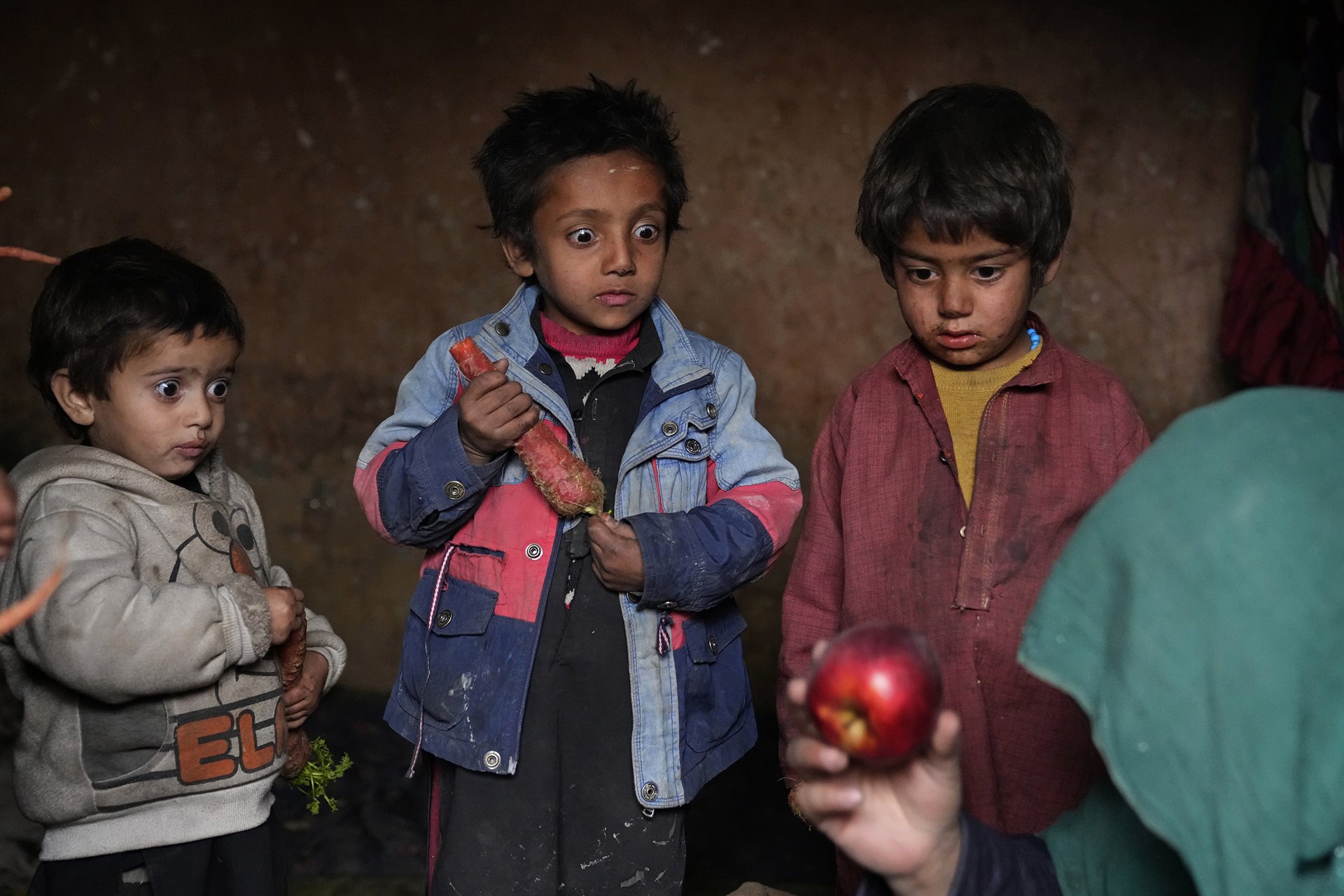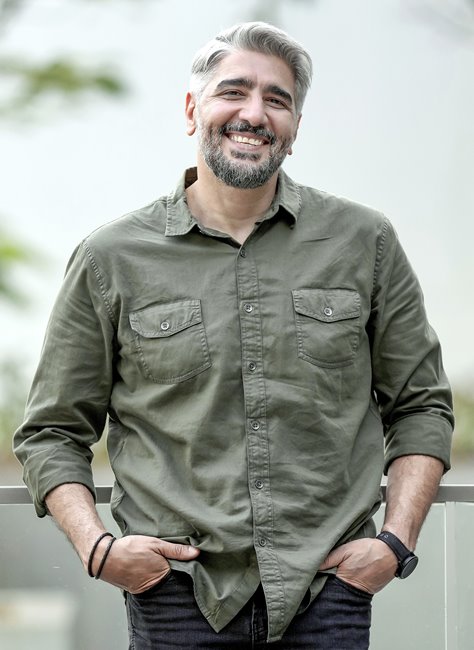Children stare at an apple that their mother brought home after begging, in a camp for internally displaced people in Bagrami, on the outskirts of Kabul, Afghanistan.
After the Taliban takeover of Afghanistan in August 2021, an already war-devastated economy was further impacted by the withdrawal of almost all foreign aid and the freezing of Afghan state assets abroad. As international aid had previously accounted for an estimated 80% of government expenditure, an already fragile Afghan economy effectively collapsed. A four-year drought, and major earthquakes – in June 2022, and three of magnitude 6.3 in Herat in October 2023 – have exacerbated the crisis.
According to Human Rights Watch, more than 28 million people, almost two-thirds of the Afghan population, needed humanitarian aid in 2023; 14.7 million needed it for basic survival. The World Food Programme reported that by mid-2023, 4 million Afghans were acutely malnourished, including 3.2 million children under five. Although a reduction in conflict contributed to a slight decrease in the number of people in need by the end of the year, extremely high levels persist, according to the United Nations Office for the Coordination of Humanitarian Affairs (UNOCHA).
In addition to the food crisis, UNOCHA estimates that around 6.3 million people – one in seven Afghans – face long-term displacement, uprooted by conflict, drought, and natural disaster. The Herat earthquakes alone affected more than 275,000 people. In late-September 2023, the Pakistan government ordered more than 1.1 million undocumented Afghans to leave the country, citing security concerns and setting a 1 November deadline. Around half a million had returned to Afghanistan by early 2024. Other countries, such as Iran, similarly deported undocumented migrants, further swelling numbers at IDP camps.
Although the international aid community has made some efforts to restore assistance since 2021, Taliban restrictions – especially on women working for non-governmental organizations and UN agencies – continue to obstruct access to humanitarian relief across the country.
This human-centered story shows the daily lives of people impacted by intersecting crises across Afghanistan in 2023.
Are you a photographer and/or passionate about press freedom? Sign up for our newsletter to stay updated on our annual contest and to hear about exhibitions near you.

